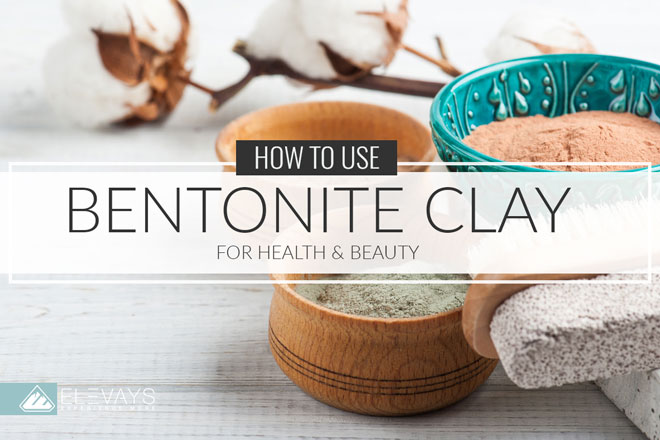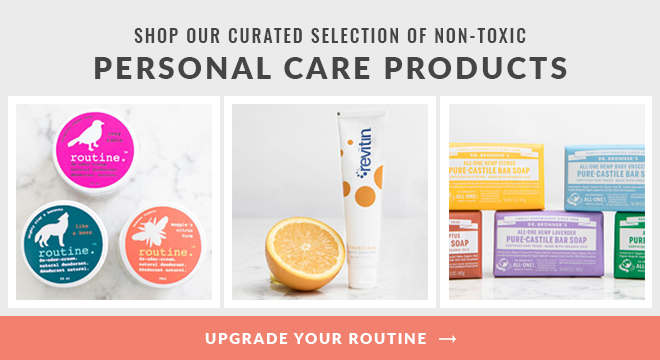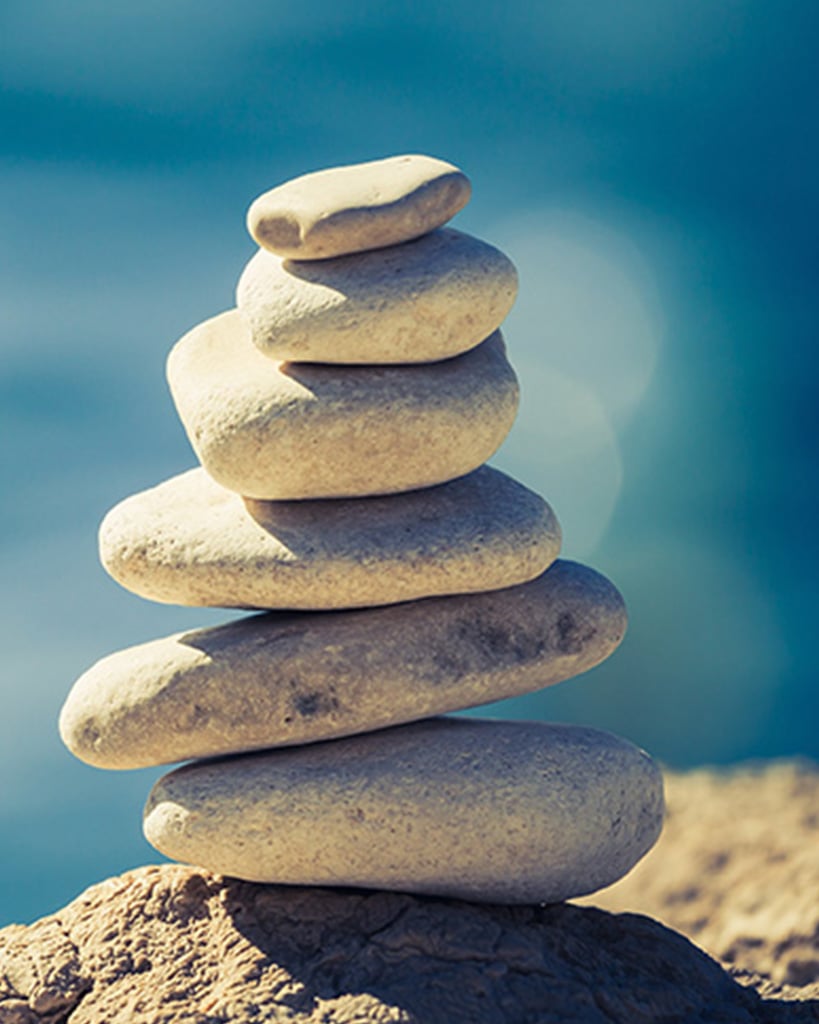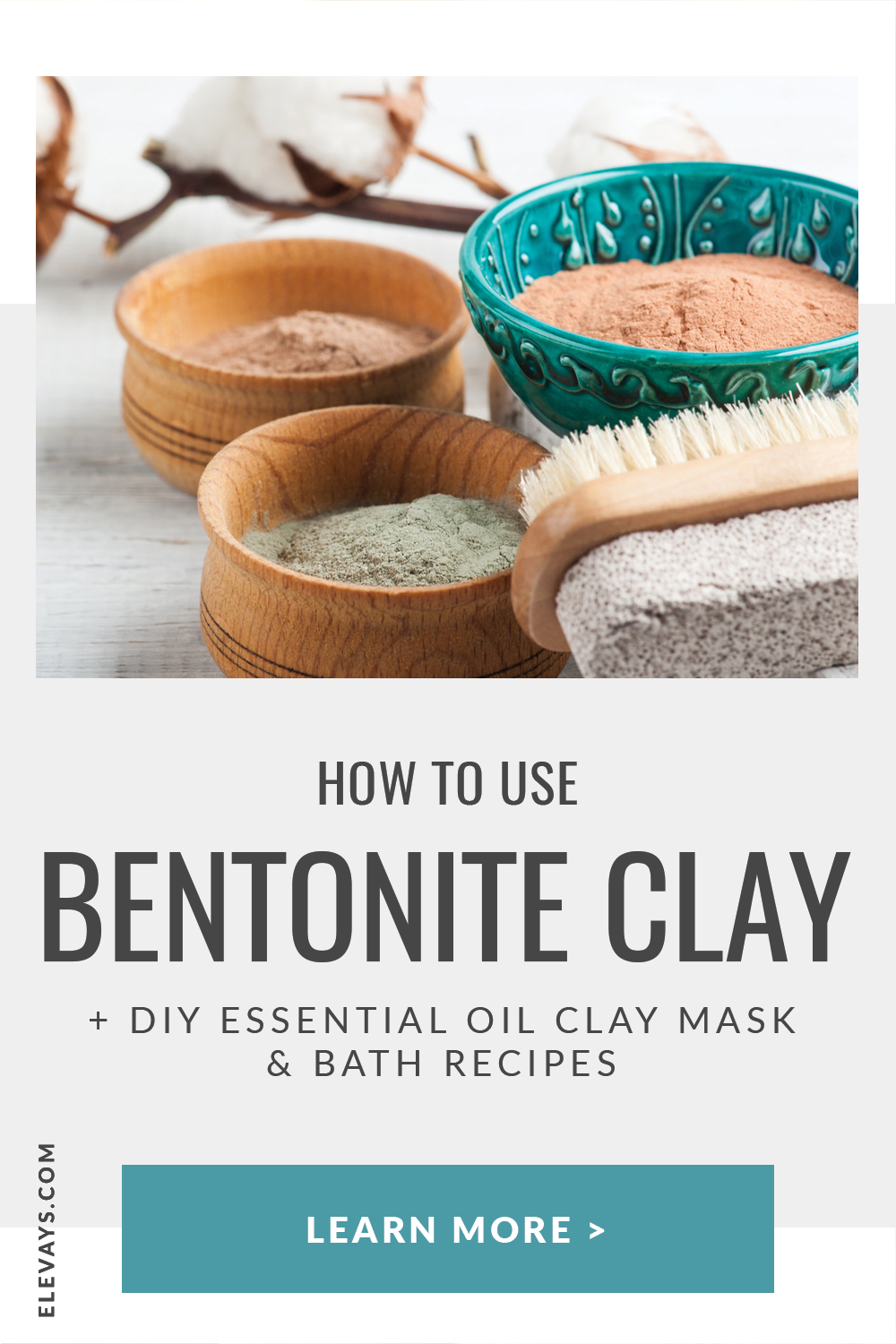I love when I find a product that is both multi-purpose and sustainable. More than that, I love sharing that product with you. I keep things like apple cider vinegar, epsom salts, and coconut oil on hand as to-go remedies, but one wellness hack that not as many people are familiar with is bentonite clay.
From internal detoxing to pulling out splinters and healing acne, bentonite clay is useful for so many beauty and health needs! So let’s get down to business and talk about what it is, all the ways you can work with it and some of my favorite recipes.
TRUTH BOMB:
You’re
Already killing it!
If You Were More Consistent With Your Wellness Routine, You’d Be Unstoppable.
What is Bentonite Clay?
Bentonite clay isn’t really a clay at all. It’s volcanic ash that has a high mineral content because it was once exposed to saltwater. It is very fine, gray , and is highly absorbable. Bentonite gets its name from Fort Benton, Montana, one of the biggest deposits in the world of this type of clay. But another major source is the Montmorillon region of France.
The reason why bentonite clay is so supportive to health and beauty is because of its ability to absorb toxins as well as the mineral content. Most of us are deficient in minerals, so ingesting this clay can help to replenish magnesium, calcium, silica, copper, and iron. Then there are the detox properties.
We come into contact with toxins every day, whether in food sprayed with pesticides, fire retardants on our mattresses and furniture, or even heavy metals in our fish. It’s almost impossible to avoid them, which is where bentonite clay comes in. It is negatively charged and highly absorbable, which means that it can attract these positively charged toxins towards it. It then absorbs them, and as it passes through the digestive system, these toxins and heavy metals leave the body.
Sounds pretty amazing, right? It is, and adding this to your wellness routine can be helpful when it comes to living a toxin-free life. So keep reading to find out nine benefits of bentonite clay as well as how to use it properly to avoid potential health risks.
Clear Up Acne and Manage Oily Skin
One of the safest and easiest ways to use bentonite clay is on the skin. It can help draw impurities and bacteria out of the skin, tighten pores, and absorb excess oil. This treatment works best for oily skin, as it can be drying.
Then there is the high silica content of the clay, which can be useful for building collagen (1). That’s right; this humble clay could help clear up your acne and reduce signs of aging at the same time. Miraculous!
I’ll share a DIY mask recipe below, but if you want a quick and easy go-to: simply mix one part of bentonite clay with one part water to make a paste and apply it to your face for 10-15 minutes before rinsing. Make sure you mix the clay in a ceramic or glass container because it doesn’t react well with metal. It can actually draw metals into it, and we don’t want that!
Promotes Healthy Teeth and Gums
One thing a lot of people don’t realize is that our teeth are alive, and they require minerals to stay healthy, just like our bodies do. Using a mineral-rich toothpaste that has bentonite clay in it can help provide your teeth with all the nutrition they need.
Bentonite clay for teeth also has the added benefit of drawing toxins and bacteria out of the mouth and into the clay to be spit out. But be aware if you have metal fillings, it can also leach mercury from your fillings which is not a good thing.
Draws Out Splinters and Bee Stings
There is nothing worse than digging around in irritated skin to remove a splinter, and this can sometimes push it further into the skin and increase the possibility of infection. This is where bentonite clay comes in.
Mix a thick paste from clay and water and apply it to the skin as a poultice. You can change this out every few hours, rinsing the old clay away and putting more on. The drawing action of the clay can help remove stingers from bees or splinters. The best part is that it’s painless and much more kid-friendly than tweezers!
Treats Poison Ivy
Bentonite clay works in a similar way on poison ivy that it does on splinters. It can literally help pull the irritating resins from the plant out of the top layer of skin so it can heal faster.
When we itch poison ivy, we can also irritate the skin and deposit bacteria from our nails onto it. The clay kills bacteria, acts as an astringent to calm red, irritated skin, and can help heal the rash quicker. Make a thin, watery paste with a one part clay, two parts water ratio and apply it to the affected area. Allow it to dry out and avoid itching!
Helps Lymphatic Drainage
Have you ever heard of an armpit detox? We have tons of lymph nodes under our arms, which are continually moving toxins out of the body. If we aren’t sweating enough or going to the bathroom enough, we can get a little overloaded.
Another reason to detox under your arms is if you’ve been using a conventional deodorant that is full of aluminum and other nasty toxins. If you want to get lymph moving through your body and remove that stuff from under your arms, try mixing one part bentonite clay, one part apple cider vinegar and a little water. Apply it under your arms like a mask, wait ten or fifteen minutes and then wash it off!
Can Be Helpful for Diaper Rash
Because of its ability to soothe inflamed skin and draw out bacteria, bentonite clay can make a useful diaper rash cream or paste. It will then keep baby protected as it dries since diaper rash often happens because of excess moisture.
Mix it with two parts water and apply a thin layer of the paste to baby’s bottom after changing. You can also make a homemade balm by mixing a little bit with shea butter and coconut oil.
Detoxes the Body
Many people use bentonite clay for its ability to detox the body, whether from candida, heavy metals, or certain types of mold. This may surprise you, but the U.S has pretty low standards when it comes to testing for mycotoxins (a type of mold) in our food. Some of the top culprits are coffee, wine, nuts, seeds, bread, and other dry goods. These molds can make us sick!
When taken internally, the clay passes through the digestive system, drawing these toxins into it and absorbing them. It then moves through the body to be excreted when you go to the toilet. The same goes for other toxins, like pesticides from farming. Studies have shown that bentonite helped mice to excrete these toxins from the body (2).
To take it internally, mix one teaspoon of bentonite clay with eight ounces of water and drink on an empty stomach. Make sure you are drinking lots of extra water as it can also constipate you if you are a little dehydrated.
Helps Digestive Upset
Similar to charcoal, a bentonite clay drink can help draw viruses, bacteria, and other toxins out of the digestive tract. This will speed up healing if you’ve been exposed to something that is causing vomiting or diarrhea. Some even recommend it as part of gut healing or a parasite cleanse.
Use it in the same way as you would a detox, by mixing one teaspoon in water and drinking it on an empty stomach. Again, don’t mix it in metal but make sure it’s in a glass container.
Supports Healthy Hair
Bentonite clay for hair works on the scalp to treat dandruff, detox the scalp and clean the hair. It can be drying if you use if too often, so stick to once a week and see how your hair responds. Mix together a few tablespoons of clay with apple cider vinegar and water to get a thin paste and pour it evenly over your wet hair and scalp. Leave it on for 10-15 minutes and then rinse thoroughly. The clay will cleanse your hair while the vinegar will condition it, so try it instead of your normal shampoo and conditioner routine.
Tips for Using Bentonite Clay
Because it is a natural substance, it can be contaminated with things like pesticides, toxins and even lead. That’s right, the FDA warned consumers against a brand called Best Bentonite Clay because of its levels of lead (1). Just make sure you find a reputable brand and you should be fine.
Don’t overdo it. As with any good thing, it’s best used in moderation. Bentonite clay side effects could be constipation and the absorption of precious nutrients in the body like potassium. This usually only happens if you consume more than the recommended dose, but use caution when giving it to children internally.
Drink lots of water to make sure that any toxins the clay absorbs are getting carried out of the body.
DIY Recipes for Bentonite Clay
Purifying Bentonite Clay Mask
Ingredients:
- 2 teaspoons of bentonite clay
- 1 teaspoon of raw honey
- 1 teaspoon of rose water
- 3 drops of frankincense essential oil
- 1 drop of lavender essential oil
I don’t like to make these ahead of time and store them because the clay tends to get dried out if it sits for too long. But it’s so easy to mix up these ingredients in a small bowl and make a quick and effective face mask. This one is great for acne-prone and aging skin and will leave your face smooth and your pores tight!
Bentonite Clay Detox Bath
Ingredients:
- 1 cup of epsom salts
- ½ cup of bentonite clay
- 3 drops of rosemary essential oil
Run a hot bath and add these ingredients. Soak for 30-45 minutes to help draw toxins out of the body while relaxing your muscles. Make sure to drink lots of water to keep from getting dehydrated and help support detoxing.
Mineralizing Clay Toothpaste
Ingredients:
- 2 oz glass jar
- 4 tablespoons of bentonite clay
- 5 drops of clove essential oil
- 5 drops of peppermint essential oil
- Pinch of Himalayan salt
Technically this is more of a tooth powder than a paste, but that makes it super easy to travel with, and it will last for ages. Simply mix all of these together and apply a little to your damp toothbrush. Both the clove and peppermint are incredible antibacterial oils that will protect the teeth and gums. The clay helps put minerals back in the teeth while also drawing impurities out of the mouth.
Clay Poultice
Ingredients:
- 3 tablespoons of bentonite clay
- 3 tablespoons of water
- 3 drops of lavender essential oil
- 3 drops of roman chamomile essential oil
This one is great for bug bites, splinters, poison ivy and other skin irritations. The lavender and roman chamomile will ease inflammation and help heal skin lesions while the clay pulls out irritants. Adjust the water to clay ratio if necessary, and apply this as a thick paste. Leave it on with a bandage over it and re-apply every few hours.
Diaper Rash Paste
Ingredients:
- 2 tablespoons of bentonite clay
- 3 tablespoons of water
- 2 drops of calendula essential oil
Again adjust the ratio of water to the clay to get the right consistency, this one is better a little watery. The calendula essential oil is so healing and gentle for baby’s skin, and this mixture can be applied in a thin layer right after changing the baby and left on as long as needed.
As I said, there are so many different ways to use bentonite clay: internally, externally for yourself and your kids. I hope I’ve given you a good idea of how best to work with this great at-home remedy and what to look out for when buying it.
Do you have any tips for using bentonite clay? Better yet, some fun recipes that combine it with essential oils? I’d love to hear from you so leave a comment below and share your experience!
Sources
- Eckelkamp, Stephanie (2018). “Why You Should Be Using Bentonite Clay to Soothe and Detoxify.” Retrieved from: https://www.mindbodygreen.com/articles/bentonite-clay-benefits-uses-safety-precautions-and-more
- Moosavi, Maryam (2017). “Bentonite Clay As A Natural Remedy: A Brief Review.” Retrieved from: https://www.ncbi.nlm.nih.gov/pmc/articles/PMC5632318/
- Berry, Jennifer (2019). “Bentonite Clay: 11 Benefits and Uses” Retrieved from: https://www.medicalnewstoday.com/articles/325241.php
- Wells, Katie (2019). “Benefits of Bentonite Clay and How to Use It.” Retrieved from: https://wellnessmama.com/5915/bentonite-clay-benefits/







READ the Latest
Longevity
Health Habits
Health Habits
Longevity